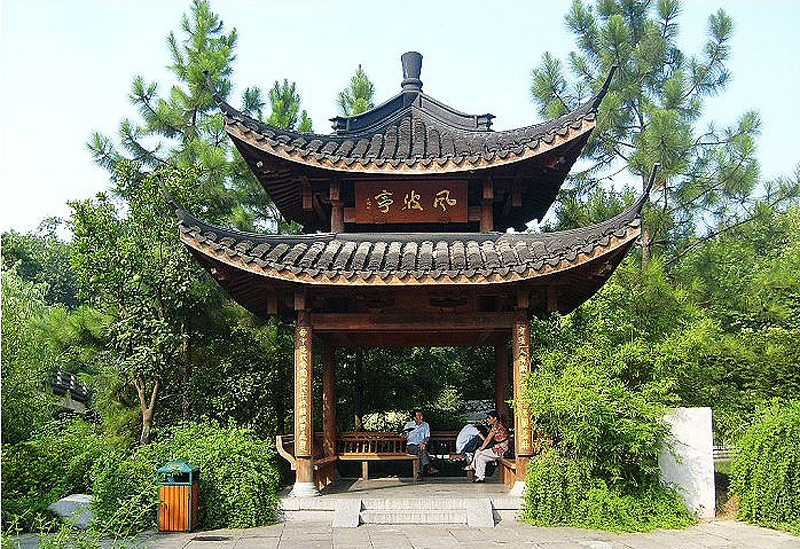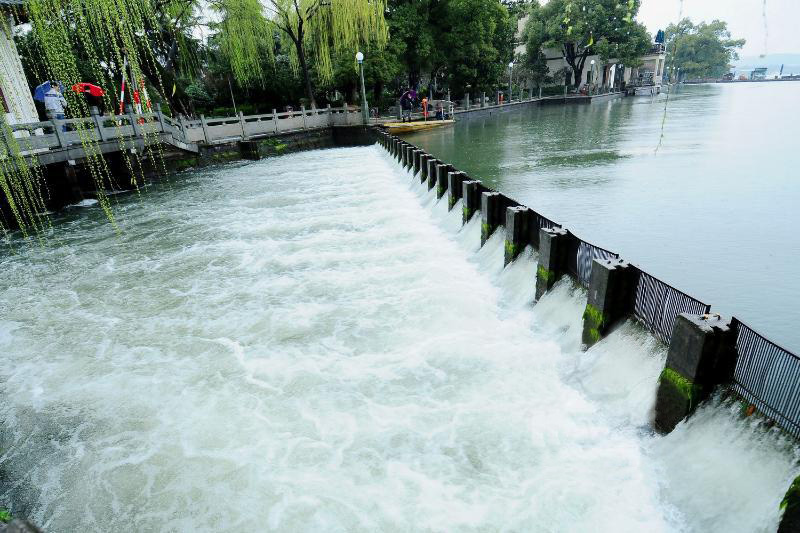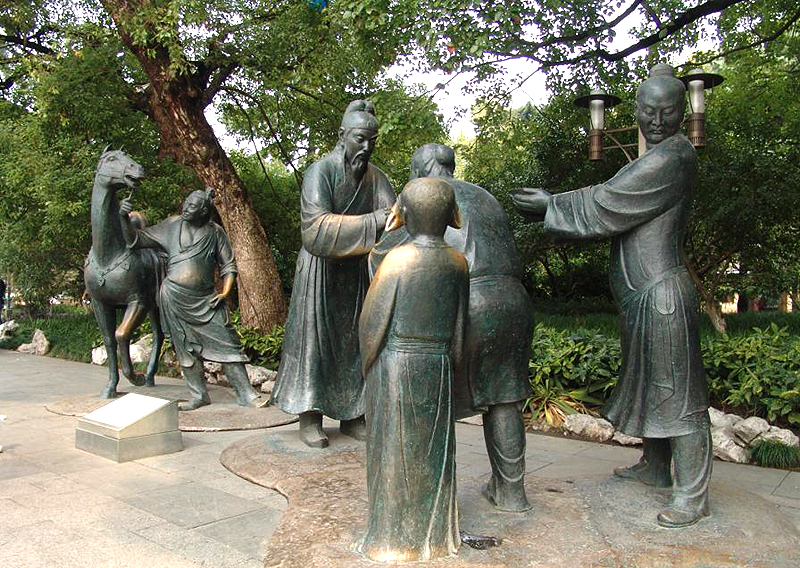- Hubin (Lakeside) Scenic Area of West Lake
- 2014-01-03
-
Located between Downtown Hangzhou and West Lake, Lakeside (Hubin) Scenic Area is well-known as the gateway to West Lake. Covering 94,000 kilometers, it is a 1,500-kilometer-long belt stretching south to No.1 Lakeside Park, and north to the Broken Bridge. As the witness of the history of Hangzhou, there are abundant historical relics in the scenic area like Wind-wave Pavilion. In addition, there are also modern wonders here, like the music foundation which can produce 600 water effects.
West Lake Music Fountain is located in the water area of West Lake not far from No.3 Lakeside Park. It is 126 meters in length and has over 400 nozzles of six types, 224 of which can rotate themselves in 360 degrees. It can produce 600 water effects. To the music, the fountain dances lithely and gracefully, and shows the audience its splendid dancing skills. During the night, an enormous number of lights change the colors making the fountain even more attractive and eye-catching.

Map of Downtown Hangzhou in the Qing Dynasty (清代杭州城区图)
The map is located in the north of No.1 Lakeside Park. Based on the map of Hangzhou in middle Qing Dynasty, ten city gates and main streets and roads were carved out of granites on the ground. From the map, citizens and tourists can get a clear picture of the development of Hangzhou.
The Site of Marking Li Mi’s Diverting (唐李泌引水纪念装置)
Li Bi was the governor of Hangzhou in 781 — the second year of Dezong Reign of Tang Dynasty. He was known for solving the problem of the drinking water in Hangzhou. During his term, he organized workers to build several water locks, and dig ditches to divert the water from West Lake into the city. He also built six wells from which people can get water. Among the six ancient wells, only the Prime Minister Well (相国井) survived. At the Site of Marking Li Mi’s Diverting, people can see a pond, on the middle of which are laid water pipes. Around them are arranged six wells in a round, drum or hexagonal shape.
Songhu Battle Memorial (淞沪战役阵亡将士纪念碑)
Songhu Battle Memorial is the first of its kind that reflects Chinese’s brave defense of Japanese Aggression. The Memorial was built in memory of officers and soldiers who died in Songhu Battle to protect Shanghai against Japanese. Made by Liu Kaiqu (刘开渠), a notable sculptor in China, Songhu Battle Memorial is of great historical and artistic value.
Historic Villas along the Shengtang Road (圣塘路别墅建筑群)
In 1920s, several bureaucratic capitalist built many Western-style villas along Shengtang Road around Lakeside Area. These villas are renowned for their variety of styles and historic stories behind them. Right now, some of the villas still stand firmly in the tranquil environment of West Lake like Shihan Jingshe (石函精舍) and Jiuzhi Xiaozhu (九芝小筑).
The Wind-and-Wave Pavilion (风波亭)
The Wind-and-Wave Pavilion is the place where General Yue Fei (岳飞) of Southern Song Dynasty (1127-1279) was murdered. According to historical records, the vicious Prime Minister Qin Hui (秦桧) framed General Yue Fei and killed him somewhere near Xiaoche Bridge (小车桥). The event was known as “the Unjust Case of the Wind-and-Wave Pavilion”. In memory of General Yue Fei, a Song Dynasty-style pavilion was built in the place where General Yue Fei was believed to be killed, and that is the Wind-and-Wave Pavilion. Around the Wind-and-Wave Pavilion, there are also the Wind-and-Wave Bridge and Filial Daughter Well in which the daughter of General Yue Fei drowned herself to be with her father.
Shengtang Sluice (圣塘闸)
In the Northeastern corner of West Lake stands a square pavilion — Pavilion of Shengtang Sluice (圣塘闸亭). On the Pavilion was engraved with “The Record of Qiantang Lake” by Bai Juyi written after he dredged West Lake. Under the Pavilion is the time-honored Shengtang Sluice, the main channel connecting West Lake and Hangzhou inner-city rivers. First built in 1279 during the Southern Song Dynasty, it is one of “Three Sluices of West Lake”.
Statues of Seeing off Bai Juyi (送别白居易雕像)
In the second year of Changqing of Tang Dynasty (822), the poet Bai Juyi served as the governor of Hangzhou. During his term, he dredged West Lake, built dikes and sluices and repaired the Six Wells built by Li Mi. Hangzhou citizens benefited a lot from his effort. In 824 — the fourth year of Changqing of Tang Dynasty when Bai Juyi’s term was over and was about to leave for Luoyang (the east capital), Hangzhou citizens were reluctant to let him leave. And the statues recreated the scene.